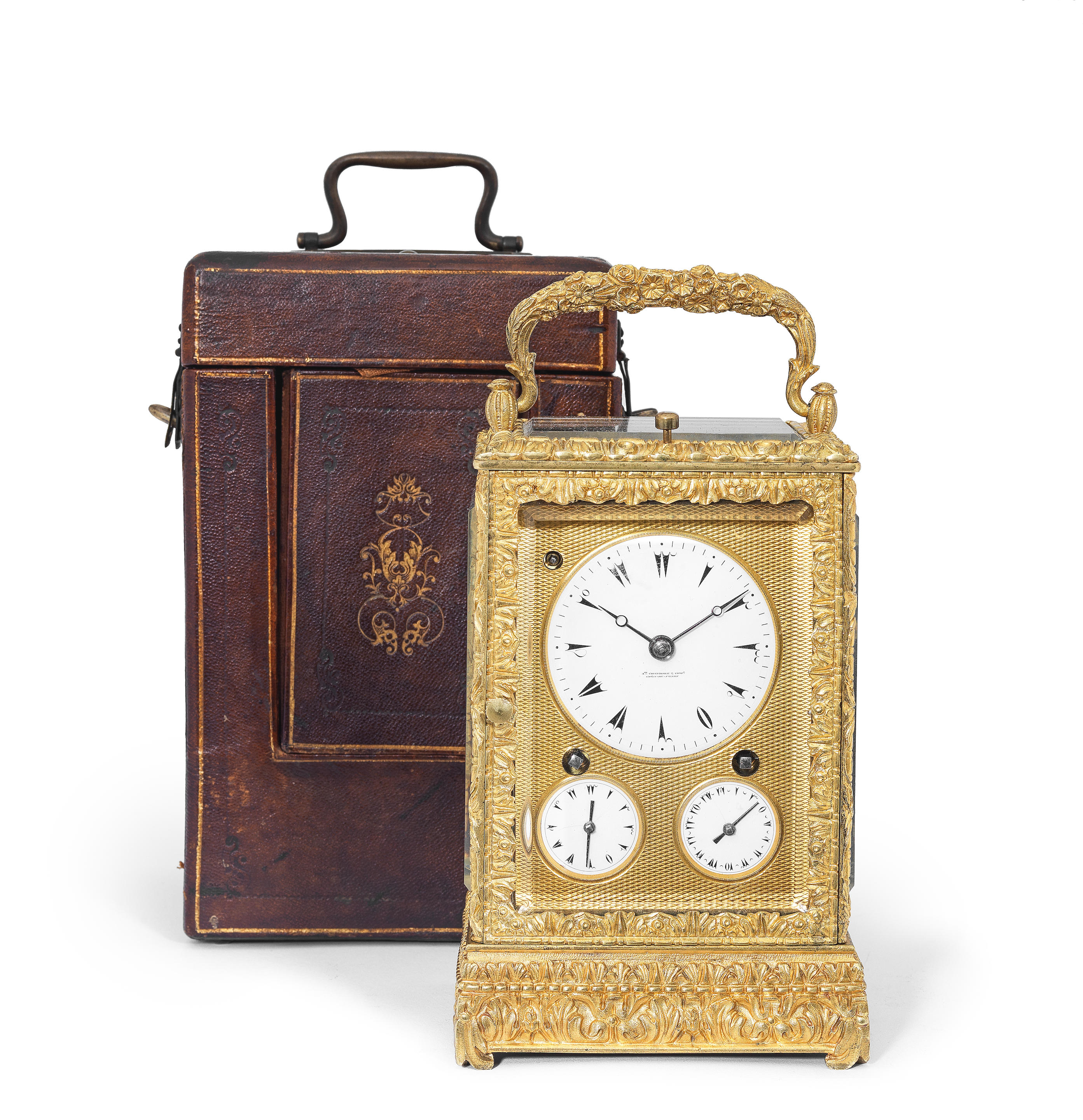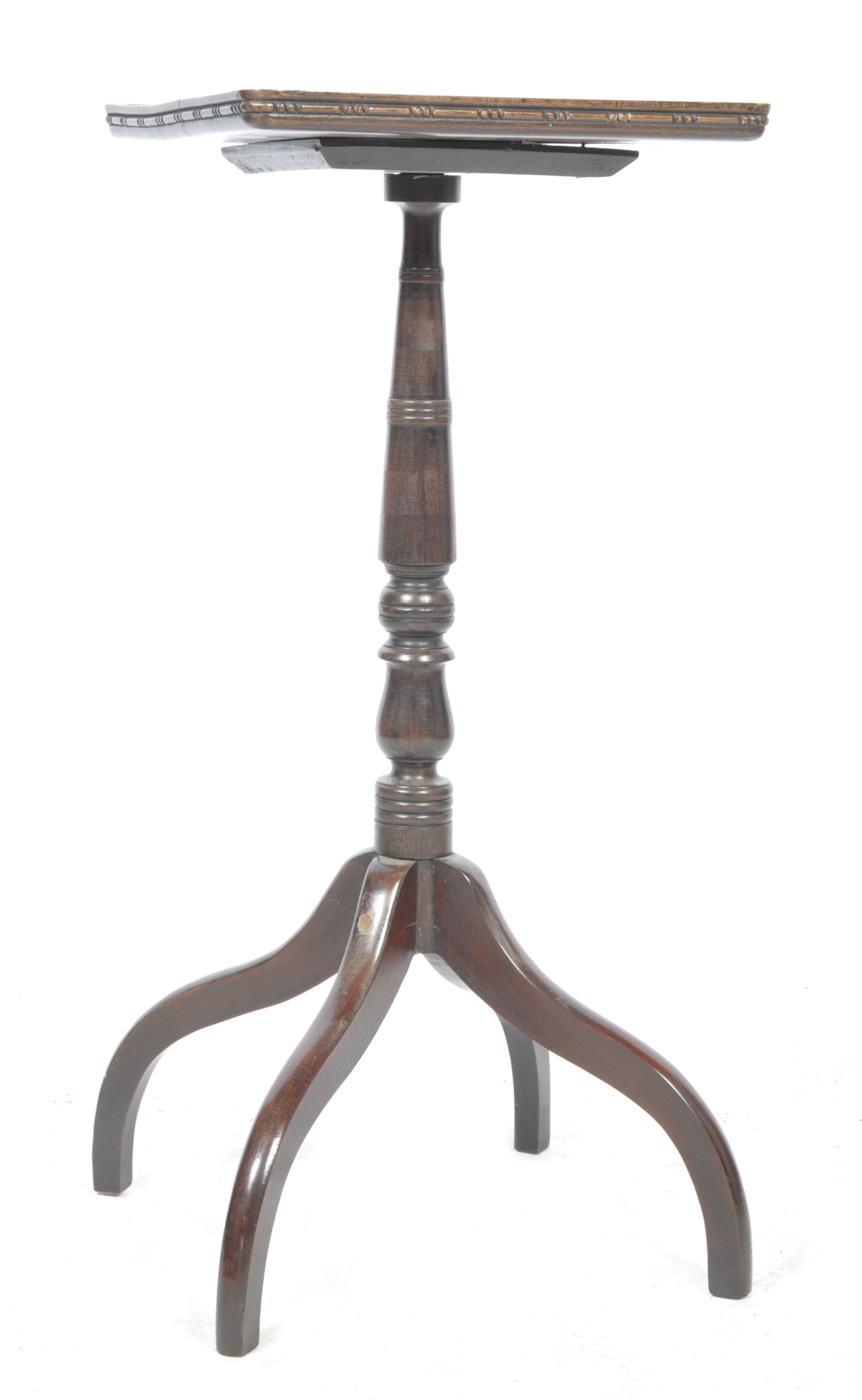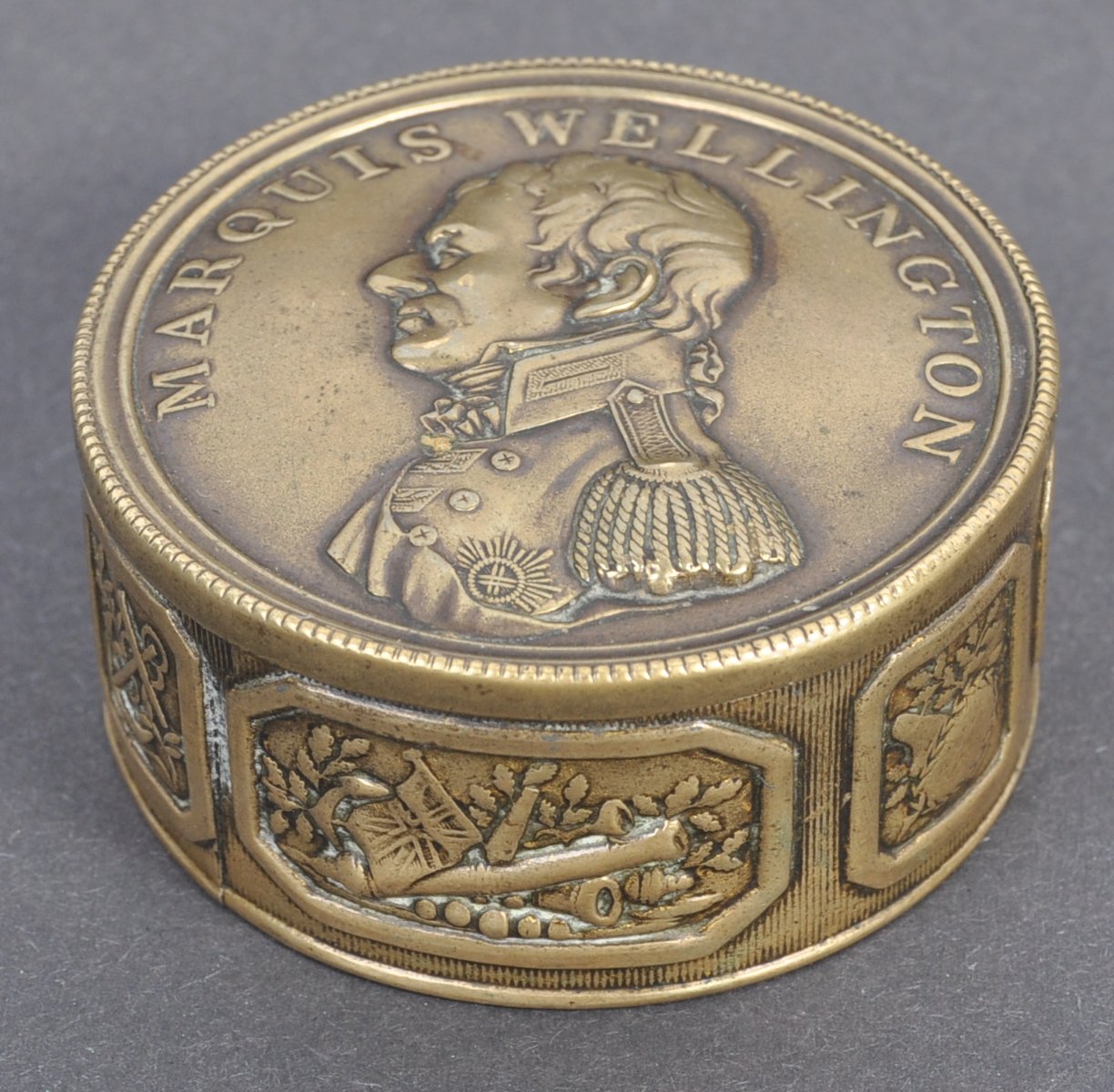The body of flag is 36 inch hoist by 60 inch fly and constructed of two widths of worsted bunting forming two horizontal bands, blue over red. It is defaced by a white panel bearing the central device, being the coat of arms of the Republic of Haiti. The panel itself is a piece of off-white, plain-wove linen, 13 inches square as finished, upon which the arms are painted in oil on both sides. All seams of the flag are flat-felled and handsewn with a running stitch of two-strand linen thread, much of which is bears traces of rosin/wax, commonly used by sailmakers and shoemakers when making their thread from spun yarn. The bunting itself is 18-inches wide from selvedge to selvedge, the common width of bunting as woven in the 18th and 19th centuries. The hoist end of the flag is encompassed in a reinforcing strip of light sail canvas of hemp or linen, 1 1/2 inches wide as doubled and sewn to the bunting with an overcast stitch with heavy linen thread/yarn and with a hand-worked grommet hole at each end made using the same thread/yarn. The coat of arms as painted on the central device consists of royal palm tree on a green ground surmounted by a red Phrygian cap or “cap of liberty” and with a drum at its base. Flanking the palm on each side are three national flags, a bronze fieldpiece and stacked cannon balls, along with stands of muskets and bayonets. Below is a red scroll edged and lettered in yellow, bearing the words “REPUBLIQUE D’HAYTI.” The palm and greenery represent Haiti or “Hayti” (as it was commonly spelled both officially and unofficially during the first four decades of the 19th century), while the cap symbolizes liberty and the military panoply represents the nation’s fight for freedom from both slavery and European dominance. The device on this flag appears to be an early version of the arms, first documented in 1807. The horizonal blue and red flag is described as early as 1804 and its use with the arms first proposed for use by the Republic in 1807. Following the Unification of Hispaniola under President Boyer in 1822, it was apparently in full use, although not officially described in print until the Constitution of 1843, at which time the commonly-used “Republique d’Hayti [or Haiti]” on the scroll of the coat of arms was officially replaced by the motto first proposed by then-President Petion in 1807: “L’UNION FAIT LA FORCE” [Union Makes Strength]. It is marked with the word “HAYTIAN” in iron-gall ink applied to the reverse face of the canvas hoist, commonly done with naval or maritime ensigns (which were stored folded or rolled with the hoist label visible in flag lockers, usually located on the ship’s quarterdeck). CONDITION: the white linen panel has some light staining and its painted coat of arms shows one vertical split and two horizontal ones caused from old folds, along with surface abrasion; the worsted bunting is in good condition, with only a few scattered insect browse holes. PROVENANCE: the late William Guthman, noted collector and historian, to private collector in 1985 and from thence, to consignor in 2019. JLK Item Dimensions: 30 x 19 x 6" Name Value Paperwork
The body of flag is 36 inch hoist by 60 inch fly and constructed of two widths of worsted bunting forming two horizontal bands, blue over red. It is defaced by a white panel bearing the central device, being the coat of arms of the Republic of Haiti. The panel itself is a piece of off-white, plain-wove linen, 13 inches square as finished, upon which the arms are painted in oil on both sides. All seams of the flag are flat-felled and handsewn with a running stitch of two-strand linen thread, much of which is bears traces of rosin/wax, commonly used by sailmakers and shoemakers when making their thread from spun yarn. The bunting itself is 18-inches wide from selvedge to selvedge, the common width of bunting as woven in the 18th and 19th centuries. The hoist end of the flag is encompassed in a reinforcing strip of light sail canvas of hemp or linen, 1 1/2 inches wide as doubled and sewn to the bunting with an overcast stitch with heavy linen thread/yarn and with a hand-worked grommet hole at each end made using the same thread/yarn. The coat of arms as painted on the central device consists of royal palm tree on a green ground surmounted by a red Phrygian cap or “cap of liberty” and with a drum at its base. Flanking the palm on each side are three national flags, a bronze fieldpiece and stacked cannon balls, along with stands of muskets and bayonets. Below is a red scroll edged and lettered in yellow, bearing the words “REPUBLIQUE D’HAYTI.” The palm and greenery represent Haiti or “Hayti” (as it was commonly spelled both officially and unofficially during the first four decades of the 19th century), while the cap symbolizes liberty and the military panoply represents the nation’s fight for freedom from both slavery and European dominance. The device on this flag appears to be an early version of the arms, first documented in 1807. The horizonal blue and red flag is described as early as 1804 and its use with the arms first proposed for use by the Republic in 1807. Following the Unification of Hispaniola under President Boyer in 1822, it was apparently in full use, although not officially described in print until the Constitution of 1843, at which time the commonly-used “Republique d’Hayti [or Haiti]” on the scroll of the coat of arms was officially replaced by the motto first proposed by then-President Petion in 1807: “L’UNION FAIT LA FORCE” [Union Makes Strength]. It is marked with the word “HAYTIAN” in iron-gall ink applied to the reverse face of the canvas hoist, commonly done with naval or maritime ensigns (which were stored folded or rolled with the hoist label visible in flag lockers, usually located on the ship’s quarterdeck). CONDITION: the white linen panel has some light staining and its painted coat of arms shows one vertical split and two horizontal ones caused from old folds, along with surface abrasion; the worsted bunting is in good condition, with only a few scattered insect browse holes. PROVENANCE: the late William Guthman, noted collector and historian, to private collector in 1985 and from thence, to consignor in 2019. JLK Item Dimensions: 30 x 19 x 6" Name Value Paperwork















Testen Sie LotSearch und seine Premium-Features 7 Tage - ohne Kosten!
Lassen Sie sich automatisch über neue Objekte in kommenden Auktionen benachrichtigen.
Suchauftrag anlegen